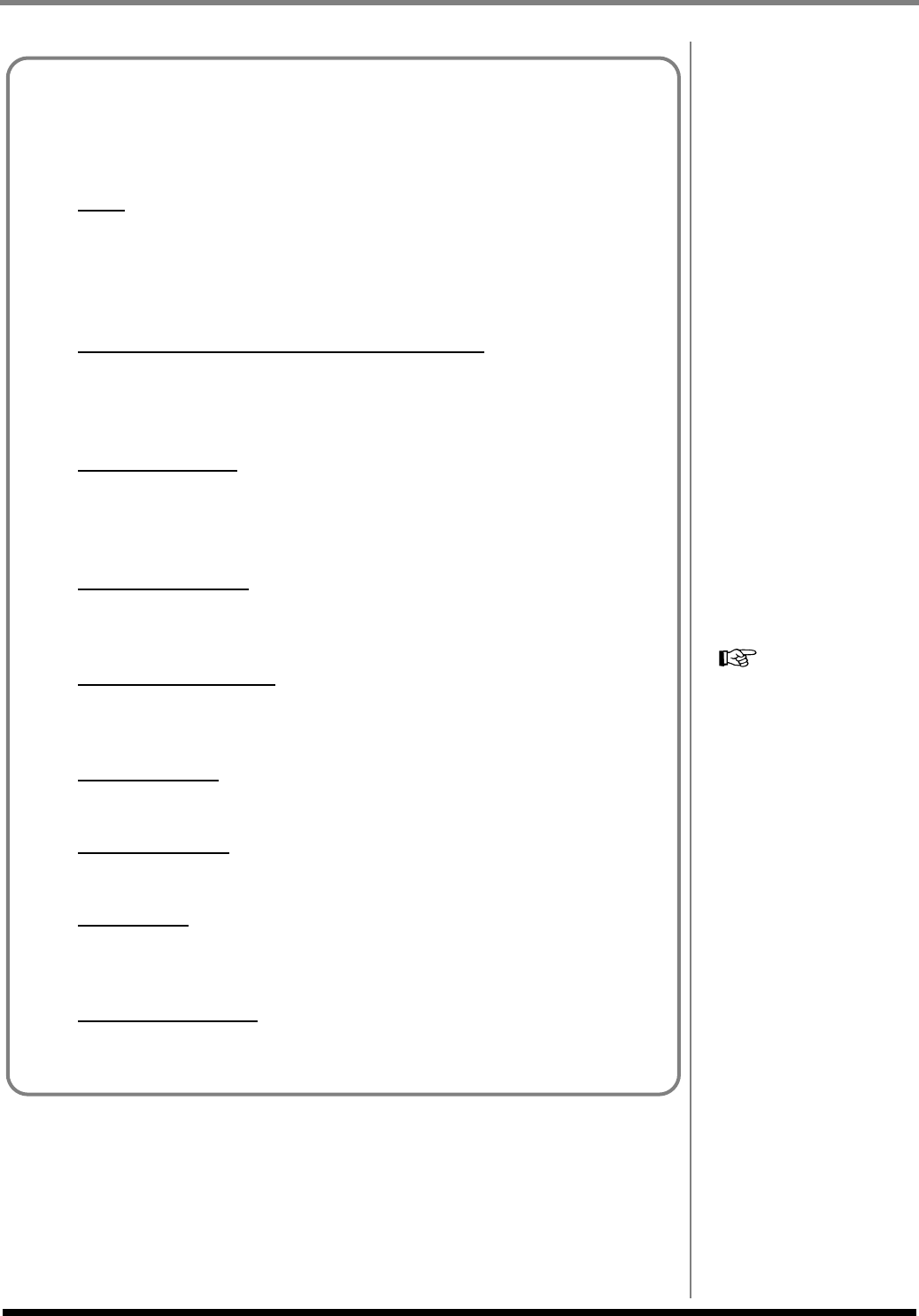
108
Editing a song
Types of performance data handled by a
MIDI track
A MIDI track can record the following nine types of performance data. The location
(measure - beat - tick) is displayed at the far left of each data event.
Note
These MIDI messages indicate a note. From the left, the parameters are Note
Number (the name of the note), On Velocity (the force with which you strike the
pad), Duration (the length that the note is held), and Off Velocity (the speed at
which you release the pad).
Poly Aftertouch (Polyphonic Aftertouch)
These MIDI messages apply aftertouch to an individual pad. From the left, the
parameters are the Note Number (which specifies the pad) and the Value (the force
of aftertouch that is applied).
Control Change
These MIDI messages apply a variety of effects such as modulation and expression.
The Control Change number (CC#) specifies the function, and the Value specifies
the depth of the effect.
Program Change
These MIDI messages switch sounds. The PC# (Program Change number) specifies
the sound.
Channel Aftertouch
These MIDI messages apply aftertouch to an entire MIDI channel. The Value
specifies the force of aftertouch that is applied.
Tune Request
This MIDI message causes an analog synthesizer to tune itself.
Mode Message
MIDI Mode Message that changes the mode
Pitch Bend
These MIDI messages modify the pitch. The Value specifies the amount of pitch
change.
System Exclusive
These MIDI messages are used to make settings unique to the MV-8000, such as
sound data or tonal character. The data is input between “F0” and “F7”.
For details on the function
controlled by each Control
Change number, refer to
“MIDI Implementation”
(Parameter List).
ECS05_manual_e.book 108 ページ 2005年11月30日 水曜日 午前11時14分


















